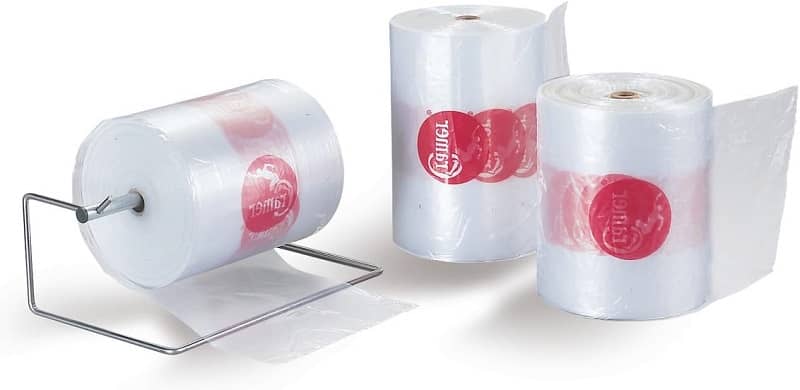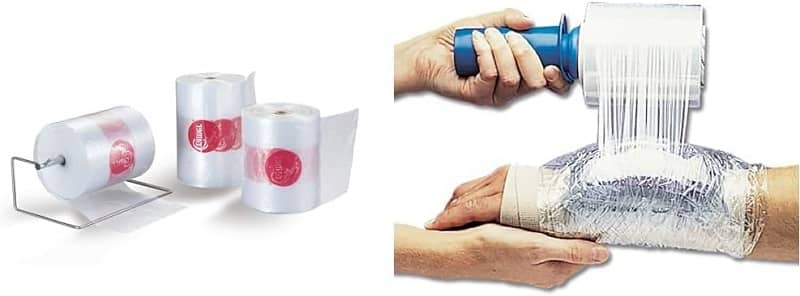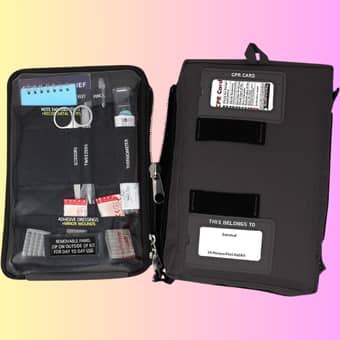Protecting yourself from harm during gym workouts aids in healing. Execute exact procedures to trigger rapid cold pack activation. You may have a sprain, strain, or bruise. A cold pack alleviates pain and curbs swelling. Discover safe and effective ways to use instant cold packs. Use it for your gym injuries.

Table of Contents
- I. Understanding instant cold packs.
- II. Preparing for use.
- III. Handle the cold pack with care to avoid injury.
- IV. Using cold packs for different gym injuries.
- V. Maximizing the Effectiveness of Cold Therapy.
- VI. Safety precautions and contraindications.
- Why an instant cold pack is essential for treating gym injuries.
- FAQ
Key Takeaways:
-
Follow instructions. Always read and follow the instructions on the instant cold pack. This will ensure safe and effective use.
-
Protect the skin: Place a cloth or towel between the cold pack and your skin to prevent ice burns or frostbite.
-
Limit the application time. Use the cold pack for 15-20 minutes at a time. This will prevent damage to the skin or tissues from prolonged cold exposure.
I. Understanding instant cold packs.
1.1. What are instant cold packs?
On your journey to recovery from gym injuries, instant cold packs can be your best friend. These packs are single-use, disposable packs that provide instant cold therapy when activated. They are convenient, portable, and easy to use. This makes them a popular choice for immediate pain relief and swelling reduction.
1.2. How Do They Work?

Instant cold packs seem magical. But the science behind them is simple. These packs contain a water pouch and a chemical pouch, separated by a barrier. When you squeeze the pack, the barrier breaks. The chemicals mix with the water, causing an endothermic reaction. This reaction draws in heat from the surrounding area. It’s the cold therapy you need for your injury.
A key chemical in this process is ammonium nitrate. Manufacturers use its heat absorption capacity in instant cold packs. This reaction creates a cold feeling. It helps constrict blood vessels, reduce swelling, and numb the area. This offers relief from pain and discomfort. The next time you reach for an instant cold pack after a tough workout, remember that science is at work. It’s using its magic to help you heal and recover well.
II. Preparing for use.
2.1. Choosing the Right Size and Type of Cold Pack
Some instant cold packs come in various sizes and types, so it’s vital to choose the one that best suits your needs. Consider the area of the injury and the coverage required when selecting the size of the cold pack. Also, say if you prefer the cold pack for single-use or reusable purposes. This depends on your preferences and budget.
2.2. Storing and Handling Cold Packs Properly
Cold pack storage determines their ability to remain effective. It is important to keep them in a cool, dry place away from direct sunlight or heat sources. Follow the manufacturer’s instructions for storage and handling. This ensures the cold pack is ready for immediate use when needed.
Proper storage of cold packs increases their usable duration. It ensures they are ready for use when an injury occurs. It’s important to check the end date on the pack and replace it if it has expired. Also, avoid puncturing or damaging the pack. This will prevent the cooling agent from leaking.
2.3. Pre-Application Tips for Optimal Results

Pack the cold pack to ensure it’s at the right temperature for optimal results. Completely envelop the injured area with the cold pack. This gives the best coverage. Hold the cold pack in place with a bandage or towel to prevent it from moving around. Apply the cold pack to a cloth first to prevent skin damage.
-
Size matters. Choose a cold pack that covers the whole injured area. This is the most effective way.
-
Remember to remove the cold pack after 20 minutes to prevent skin damage.
III. Handle the cold pack with care to avoid injury.
3.1. Factors to Consider Before Applying
Unlike heat therapy, cold packs are not suitable for all injuries. Consider these factors before using an instant cold pack. They include the type and severity of your injury. Also, consider your skin sensitivity and any medical conditions.
-
Check with your healthcare provider if you have any doubts about using a cold pack.
-
Ensure that there are no open wounds in the area where you plan to apply the cold pack.
-
Check your skin during the application to avoid frostbite or skin damage.
The key is to ensure that using a cold pack is safe and beneficial for your specific injury.
3.2. How to Apply the Cold Pack Correctly

You’ve decided to use a cold pack for your injury. Install these steps to achieve accurate application. Putting the cold pack on right after the injury can reduce swelling and inflammation.
Apply a cold pack to the injured area for about 15 to 20 minutes at a time. Be sure to place a cloth or towel between the cold pack and your skin to prevent frostbite. After each session, let your skin warm up. Replenish the cold pack.
3.3. Common Mistakes to Avoid
Correct application of cold therapy yields success. Yet, there are common mistakes to avoid, which can prevent harm. One common mistake is leaving the cold pack on for too long, which can damage your skin and tissues.
Use a barrier when applying cold packs to prevent skin contact. This can result in frostbite or cold burns, causing more harm than good. Always remember to use a cloth or towel to protect your skin during cold therapy sessions.
IV. Using cold packs for different gym injuries.
4.1. Treating Muscle Strains and Pulls
All too often, you may experience muscle strains or pulls during your gym workout. When this happens, apply a cold pack right away. This will help reduce swelling, ease pain, and prevent further injury. Remember to wrap the cold pack in a thin cloth or towel before applying it to your skin to avoid ice burn.
4.2. Relieving Joint Pain and Inflammation

An instant cold pack can also help relieve joint pain and swelling. Use it after a tough gym session. Applying the cold pack to the sore joint can reduce swelling. It will also numb the area to ease pain and speed recovery. Avoid placing the cold pack against your skin, which can cause frostbite.
Using a cold pack for joint pain and inflammation? It’s best to elevate the joint while applying the cold pack. This will further help in reducing swelling and promoting faster healing.
4.3. Reducing swelling and bruising.
Strains and bruises are common gym injuries. They enjoy using an instant cold pack. Applying the cold pack to the injured area can reduce swelling and bruising. It can also speed up healing. Remember to limit each cold pack to 15 to 20 minutes. This will avoid skin damage.
Apply the cold pack, then knead the area with pressure. This will enhance its effect on reducing swelling and bruising. This can help improve blood circulation and aid in the healing process.
V. Maximizing the Effectiveness of Cold Therapy.
5.1. How long should I apply the cold pack?
Pack the injured area with the cold pack for 15-20 minutes at a time. Applying the cold pack for longer periods of time can damage tissue. It may not provide more help.
5.2. Combining cold therapy with other recovery techniques.

Also, by using a cold pack, you can speed recovery by adding elevation. You should also add compression and rest to cold therapy. This combination can help reduce inflammation and promote healing.
You must understand how to use other techniques with cold therapy to get its full benefits. You can use strategies like compression, elevation, and rest. You can also apply a cold pack. These actions will optimize healing and reduce pain and swelling.
5.3. Tips for Enhancing Cold Pack Performance
-
Prevent ice burns by placing a cloth or towel between your skin and the cold pack.
-
Put the cold pack back on every 2 hours. This keeps the therapeutic temperature and prolongs the pain relief.
Cold therapy can be better with these tips. They will improve its ability to reduce pain and inflammation. Take these steps. They will ensure you get the most from using a cold pack for your gym injuries.
VI. Safety precautions and contraindications.
6.1. When Not to Use an Instant Cold Pack
Many injuries can benefit from the use of an instant cold pack to reduce swelling and pain. Yet, there are times when you should not use a cold pack. If you have Raynaud’s disease or are allergic to colds, using an instant cold pack can make these conditions worse. It can also cause more discomfort.
6.2. Potential Side Effects and Interactions

Instant cold packs are generally safe. Yet, there are some side effects and interactions to be aware of. Leaving the pack on the skin for too long can cause frostbite or skin irritation. Also, if you have sensitive skin or a skin condition, the treatment may give you redness or blisters where you apply it.
6.3. Precautions for Certain Medical Conditions
Side effects from instant cold packs are rare. Yet, you should still be cautious if you have certain medical conditions. If you have diabetes or circulation issues, a cold pack can slow blood flow. It can make these conditions worse. Also, if nerve damage is in the area where you are applying the cold pack, you may not be able to feel if the pack is harming your skin.
Why an instant cold pack is essential for treating gym injuries.
Remember to follow the pack’s instructions. Use them when using an instant cold pack for gym injuries. Crucial for safe and effective use. Apply the cold pack for the recommended amount of time, and always wrap it in a cloth to prevent ice burns. If you experience persistent pain or swelling, seek medical attention. Immediate application of cold packs facilitates swift recovery from injury. They also relieve discomfort from your gym-related injuries.
FAQ
Q: How do I safely use an instant cold pack for gym injuries?
Read the packaging instructions before using an instant cold pack. Do this for gym injuries. Apply the cold pack to a towel or cloth to avoid skin contact. Always wrap the cold pack in a cloth or towel before applying it to the injured area. Limit each application to 20 minutes to avoid potential skin damage.
Q: Can I reuse an instant cold pack?
You should only use instant cold packs once.
Once you activate and use the pack, you cannot reuse it. Toss the pack in a recycling bin after use is complete. A cold pack in use produces only a slight temperature decrease. It can also be harmful.
Q: How effective are instant cold packs for gym injuries?
Instant cold packs work well. They give fast relief for gym injuries like strains, sprains, and bruises. The cold therapy helps reduce inflammation. It numbs pain and aids healing in the injured area. It’s important to follow the proper usage instructions. If the injury is severe or lasts, consult a healthcare professional.
Last Updated on August 16, 2025 by Holistic Healths






One thought on “How to Safely and Effectively Use an Instant Cold Pack for Gym Injuries”